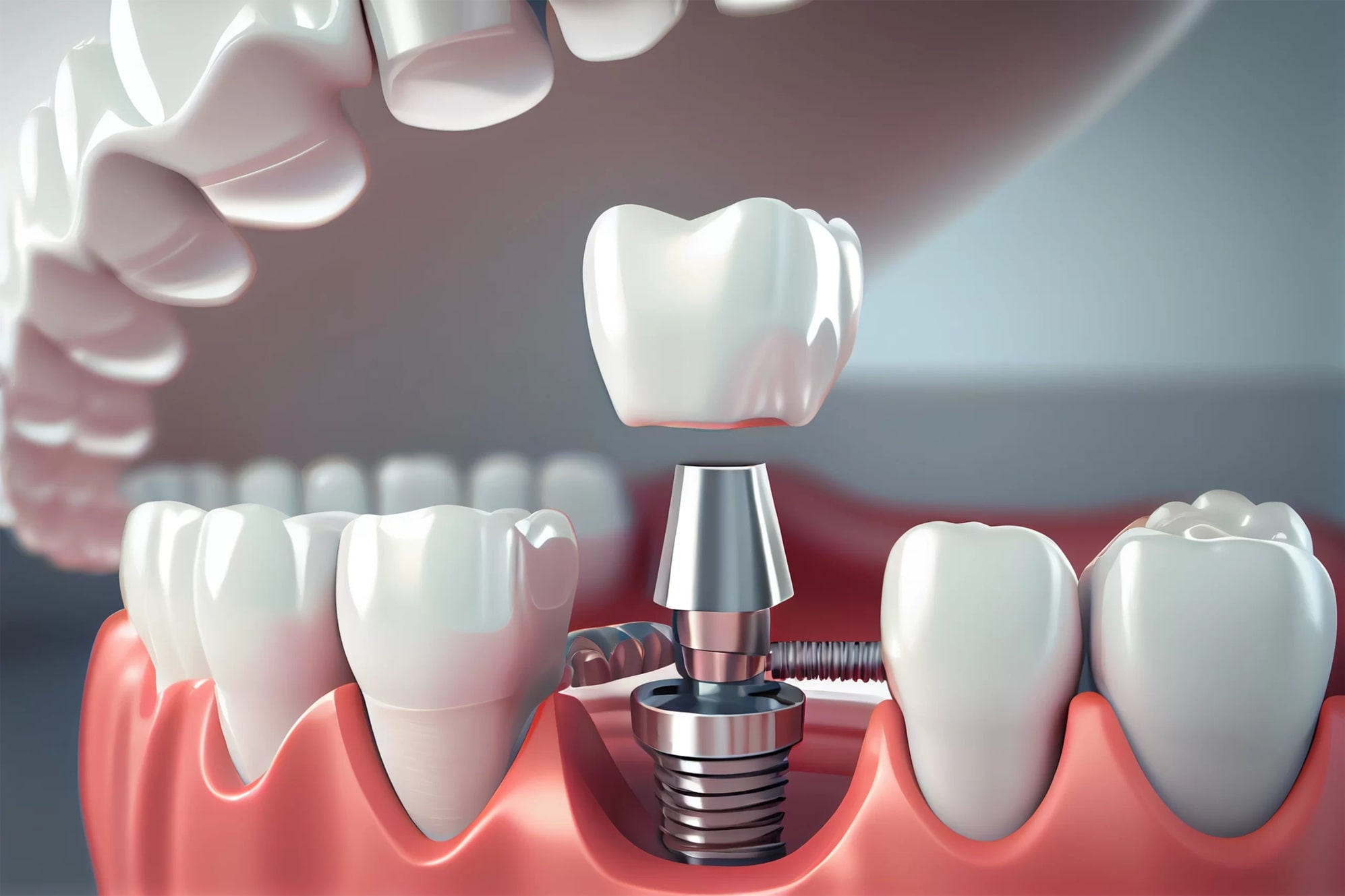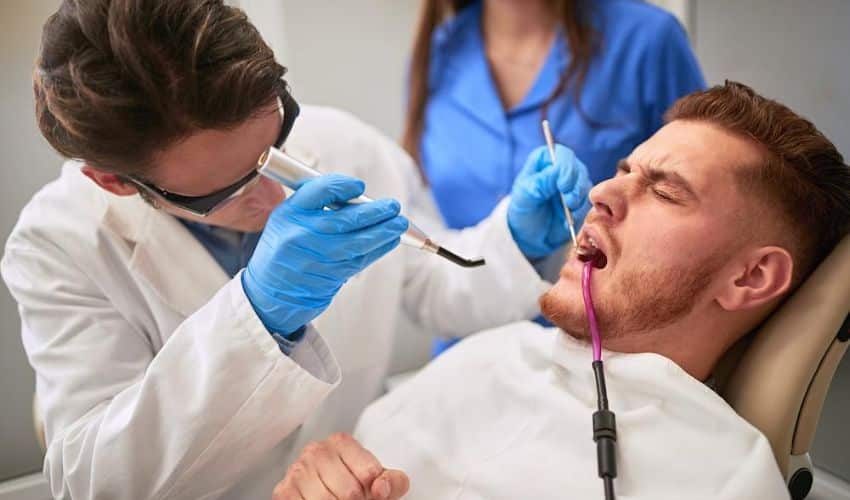
Does Food Get Stuck Under All-On-4 Dental Implants?
All-on-4 implants have revolutionized dental care, offering a secure and aesthetically pleasing solution for replacing missing teeth. These innovative implants provide a full arch of fixed teeth supported by just four strategically placed implants. But even with their incredible design, a common question arises: can food get stuck under All-on-4 implants? The answer is yes, though it’s not as frequent as with traditional dentures. Today’s blog will let you know why food might get lodged and how to deal with it effectively.
Reasons Food Gets Stuck Under All-on-4 Implants
- Improper fit: While All-on-4 implants in Mountain Home, AR, are designed for a tight seal, slight discrepancies can occur. This can create small gaps where food particles get trapped, especially between the implant and gum tissue.
- Changes in the jawbone: Over time, the jawbone naturally changes. This can cause the implant or prosthetic teeth to shift slightly, creating new spaces for food to lodge.
- Food consistency: Sticky or fibrous foods like meat or stringy vegetables are more likely to get stuck compared to softer options.
- Flossing technique: Unlike natural teeth, flossing around implants requires specific techniques. Improper flossing might not effectively remove food debris.
Dealing with Food Stuck Under All-on-4 Implants:
- Gentle Brushing: Use a soft-bristled brush specifically designed for implants to clean around the implant posts and underneath the prosthetic teeth. Angling the brush slightly can help reach those hard-to-get areas.
- Flossing Techniques: There are special implant flossers or water flossers (Waterpiks) that can effectively clean under the bridge and around the implants. Ask your dentist for recommendations on proper flossing techniques for your specific situation.
- Irrigation: Using a Waterpik can be particularly helpful in dislodging stubborn food particles. The water pressure can reach areas that brushing and traditional flossing might miss.
- Interdental Picks: For those tight spaces, interdental picks can be a good option, but use them with caution and follow your dentist’s instructions to avoid damaging the gum tissue.
- See Your Dentist: If you’re consistently experiencing food getting stuck, don’t hesitate to schedule an appointment with your dentist. They can identify the cause and make adjustments to the implant or prosthetic teeth to ensure a better fit and prevent future food traps.
Preventing Food Traps:
- Maintaining Good Oral Hygiene: Brushing twice a day for two minutes and flossing daily is crucial for overall oral health and preventing food buildup around the implants.
- Regular Dental Checkups: Attend regular dental appointments to monitor the health of both your implants and gums. They can also identify any potential problems early on, like a loose implant or shifting bone, before they contribute to food impaction.
- Dietary Choices: While you can enjoy most foods with All-on-4 implants in Mountain Home, AR, be mindful of particularly sticky or fibrous foods that might get stuck more easily. Consider cutting them into smaller pieces or choosing softer alternatives.
Overall, food occasionally getting stuck under All-on-4 implants shouldn’t be a major concern. By maintaining good oral hygiene, using the right cleaning tools, and visiting your dentist in Mountain Home, AR, regularly, you can minimize the chances of food impaction and keep your All-on-4s sparkling clean and comfortable. If you do experience persistent issues, Don’t hesitate to seek professional help to maintain the long-term health of your implants.
Frequently Asked Questions
Occasional food impaction can happen, especially if you’re new to All-on-4s. However, frequent occurrences could indicate an underlying issue best addressed by your dentist, who can make adjustments or provide cleaning tips to ensure your implants remain comfortable and functional.
If you can’t dislodge the food with gentle brushing, flossing, or irrigation, don’t force it. Book an appointment with your dentist to prevent any implant or gum tissue damage. They can safely remove the trapped food and check for any issues that might be causing food impaction.
Soft-bristled brushes, implant flossers, water flossers, and interdental picks (used with caution) are all effective tools. Consult your dentist for personalized recommendations based on your specific situation.
While you can enjoy most foods, be mindful of particularly sticky or fibrous items that might get lodged more easily. Consider cutting them into smaller pieces or choosing softer alternatives.
Schedule regular checkups with your dentist, typically every six months, to monitor the health of your implants and ensure a proper fit that minimizes the risk of food impaction.



